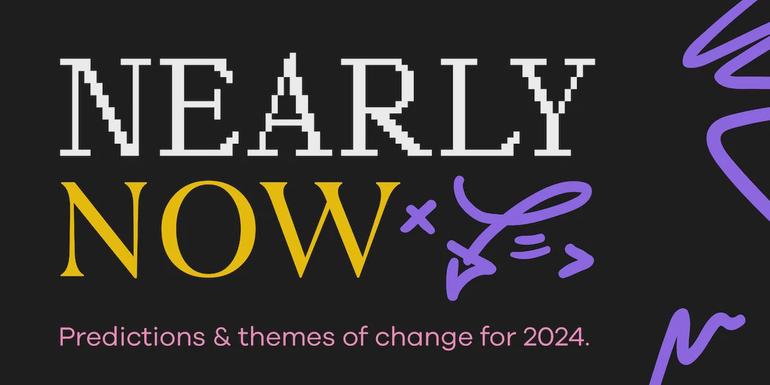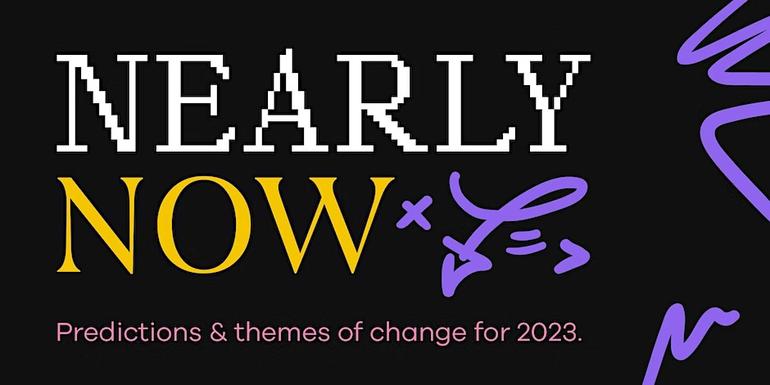
How Your Idea of Innovation Might Be Wrong—And How to Get It Right
Successful innovation has two key requirements: Being able to see change coming, and being able to leverage it first.
The question of what innovation is and how to get more of it feels like it’s being discussed everywhere: in every conference, every blog post (including this one), and every conversation between two people in Patagonia fleeces at a Stumptown Coffee. Many common definitions are something akin to “the act of creating something new.” Yet in a corporate environment, new things are being created all the time, and few of them are considered innovations.
Through hundreds of conversations over the past five years with people at the forefront of innovation, we at Faculty of Change have come to a definitive conclusion: there is no consensus as to what innovation is. Truly understanding it (and how to get more of it) requires taking a step back, and asking “What are organizations looking to achieve with innovation?”
Many firms seek to be innovative to remain relevant as technology, demographics, or shifting tastes change their markets. This relevance can take many different forms, from optimizing costs to retain competitive pricing, to creating new products or messaging to appeal to growing segments, or even deciding to sell to another company better capable of thriving in the new environment.
The common threads behind the idea of innovation are therefore understanding the changes that are affecting your company and your customers, and honing the skills and resources to take advantage of the opportunity that change creates.
Innovation involves two key concepts: understanding how change is affecting your company and customers, and honing the skills to take advantage.
Taking this lens there are many traditional companies that have long been under-appreciated for their innovation. Rolls Royce was first known for its automotive engines but saw the emerging aircraft market and is now the world’s second-largest manufacturer of airplane engines. L’Oreal was one of the first large cosmetics companies to create products targeted specifically to men. The stories go on and on.
For contemporary companies, remaining relevant means keeping up with the pace of change It happens more rapidly, so innovation has become critical.
Being Able to See Change
Large companies have access to the early signals of change in ways no one else does. They interact with thousands of customers every day. Their employees are on the front lines, discovering customer needs and helping them find the right solutions. The larger the organization, the more data they are creating and aggregating about their customers and markets.
The challenge is converting the data into insight and the insight into strategy. Without the right organizational empathy, change can happen under your nose and it remains undetected until it is too late. The more traditional types of data that organizations tend to rely on generally reflect what has already happened. The empathetic and human-centered data, which is more difficult to surface, is a stronger indicator of future change and opportunity.
Easy strategies to ensure you are spotting change early include:
Stay close to your lead users — Which of your users are always first? What are they doing now that you should be doing next? How can your people maximize the time they spend learning from and with them?
Look at the extremes — Innovation tends to occur in two places, the low and the high ends of the market. At the high end, customers can afford a premium, best-in-class design, performance, and experience. At the low end, operational efficiency and business model novelty must excel to drive profitability.
Some of the most exciting retailers today include Dover Street Market at the high end and Dollar General at the low. Flying Tiger does an excellent job of straddling two extremes with its contemporary, up-market approach to the dollar store.
Being Able to Leverage Change
The idea that “life is flux,” or its contemporary coinage, “the only constant is change” was first recorded in 500 BCE by Heraclitus of Ephesus. Even 2500 years ago, people were perplexed by how fast the world was changing.
Organizations that will succeed take a proactive response to change vs. a reactive one. Knowing that change is always coming, how can you get in front of it, instead of being forced to respond to it?
There are five organizational behaviours essential to owning change:
-
Cross-Functional Teams — Small, nimble teams representative of all of the disciplines are a necessity to execute on opportunities. These include business, strategy, design, engineering, etc.
-
Including the User’s Voice in Every Decision — The most common mistake when looking for what is next is making assumptions on what users want and need. Watching them and speaking to them as humans, instead of asking them what they want as consumers, will help an organization understand what they actually need, vs. what they think they want. The former is guaranteed to lead to success. The latter is not.
-
Lean Teams — The most value is generated by a smaller team fully dedicated to a project vs. a larger team of part time players. They make faster decisions, are able to truly embrace learning from failure, iterate through a lot more new things and find success faster as a result. Think about how few people a project can get away with instead of how many you can afford to allocate.
-
Continuous Innovation Guided by a Long-Term Strategy — Innovation for innovation’s sake helps to build the muscle but it does not drive meaningful outcomes. A strategy for innovation is a must. This strategy is a structured view of the future and the steps to create it. When making decisions about products today, this vision will allow you to sew the seeds of the future product in today’s offering, enabling the product to gradually evolve in the right directions as technology and capabilities advance.
-
Organizational Freedom to Continue — Asking talented team members to pour their heart and soul into projects then asking them to hand off those same projects is traumatic. In order to cultivate the sense of ownership and accountability required to develop truly amazing products, teams need to know they can continue to build and grow with them. Creating internal, passionate product owners will inspire the creation of offerings that change the relationship with your users.
While learning to see change can be easy, developing capabilities to respond to it is not. In later posts, we will discuss strategies to get there. At a high level, you can start now with learning by doing. Model the future behaviours you wish to exhibit by developing a hypothesis and allocating (a few) personnel to test it.


